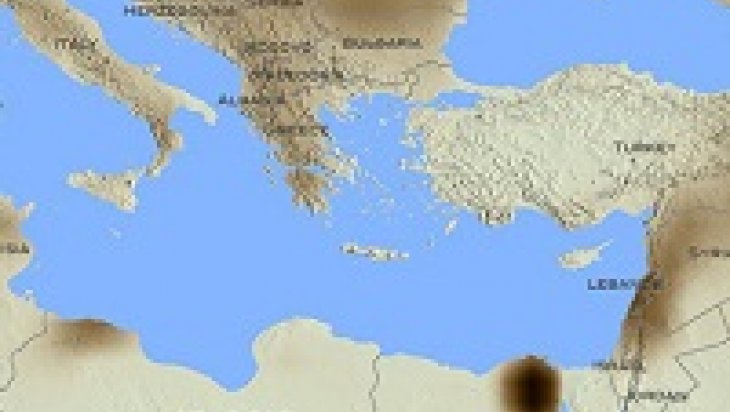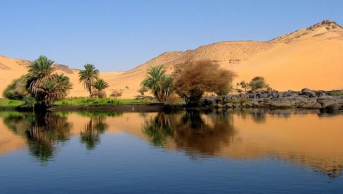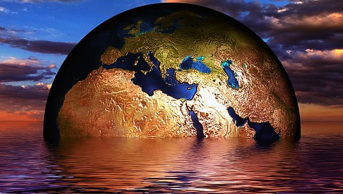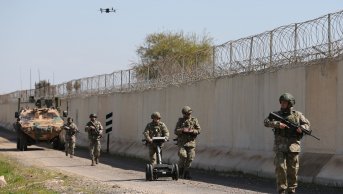Climate Wars in the Middle East? or Good Governance Defying Scarcity

It is intriguing to read a recent article (Spatiotemporal drought variability in the Mediterranean over the last 900 years, published in the Journal of Geophysical Research) on the climatic variability in the Mediterranean basin by the lead author Benjamin Cook, who works as a climate scientist at NASA's Goddard Institute for Space Studies and the Lamont-Doherty Earth Observatory at Columbia University, and other experts like Kevin Anchukaitis, Ramzi Touchan, David Meko, and Edward Cook. One of the main points of the article was particularly eye-catching: “there is an 89%/98% likelihood that the recent Levant drought is the worst of the last 900/500 years”. The drought they are studying started in 1998 and lasted until 2012. The study was just seen as a new evidence that the human-induced climate change was one of the important causes of the Syrian War. Before briefly discussing whether this is a well-founded argument, let me fist provide a summary of the basic methodology and findings of this study.
“Old World Drought Atlas" (OWDA), which can be reached at online through the websites of the National Oceanic and Atmospheric Administration and National Climatic Data Center of the United States of America, is a set of year-to-year maps of tree-ring reconstructed summer wetness and dryness over Europe and the Mediterranean Basin between years 0 (zero) and 2012. The recent study by Cook et al. used the data from OWDA and analyzed tree rings in northern Africa, Greece, Lebanon, Jordan, Syria and Turkey. Researchers then compared these with records in Spain, southern France and Italy. It was known that trees with thicker rings indicated the years when rain was plentiful. Conversely, thinner rings meant dry years.
Drier periods and droughts are naturally occurring phenomena. In other words, it is “normal” to experience droughts or drier years, from time to time. The North Atlantic Oscillation and the East Atlantic Pattern are said to be the two main circulation patterns that contributing the emergence and disappearance of drought conditions in the Mediterranean. It was also found that extreme wet or dry periods were quite broad, but the recent drought in the Levant region, from 1998 to 2012, stands out as about 50 percent drier than the driest period in the past 500 years, and 10 to 20 percent drier than the worst drought of the past 900 years. Therefore, this study has found that the recent drought experienced in the Eastern Mediterranean, also known as the Levant, is fundamentally different than the normal cyclical drought periods. Benjamin Cook, the lead author from NASA remarked, “if we look at recent events and we start to see anomalies that are outside this range of natural variability, then we can say with some confidence that it looks like this particular event or this series of events had some kind of human caused climate change contribution.”
There are other parts of the world with little water availability. However, if there is efficient government in place to manage the water scarcity, then it will not escalate into more serious conflicts. Therefore, it will be an over generalization to claim that extreme water scarcity will lead to conflict. It could even be partly misleading to argue that the water scarcity is contributing to escalation of the existing conflicts. It is rather the problems in water “governance”, not the “scarcity” or the climate change that causes this scarcity per se, that intensifies the conflictual atmosphere in a given region. Israel provides a perfect example to test whether the scarcity itself, or the way governments manage it, determine the final outcome of peace and stability or conflict. It is a country with literally very little water availability. It has only 93 cubicmeters of renewable internal freshwater resources per capita according to the World Bank data. This figure is 327 in Syria, war-torn neighbor of Israel, according to same source. And Israel has experienced the same drought conditions that Syria and other parts of the Levant have experienced.
This comparison gets even sharper when one looks at the rates of withdrawal. In 2007, according to AQUASTAT of the Food and Agriculture Organization of the United Nations, Israel was withdrawing some 282 cubicmeters of water per capita, whereas Syria was withdrawing some 817 cubicmeters of water. This much water is well-beyond Israel can imagine. Syria does not appear in the list of the world’s most water-stressed countries, while Israel does. Within this framework, it could have been reasonable to expect a conflict-prone situation in Israel. But the conflict has appeared and escalated in Syria. Some may claim that Israel cannot be a prime example since it is a highly advanced country in terms of water technologies and water saving. We have other examples, like Jordan. This country’s figures are also comparable to those of Israel. Jordan is also doing good in efficiently utilizing its very limited water resources.
In brief, water scarcity and climate change related prolonged droughts should be the last factors to blame in exacerbating conflicts. Problem is more related to questions about “governance”, like how you are getting most out of your available water resources, or how prepared you are for the drought-like conditions.









